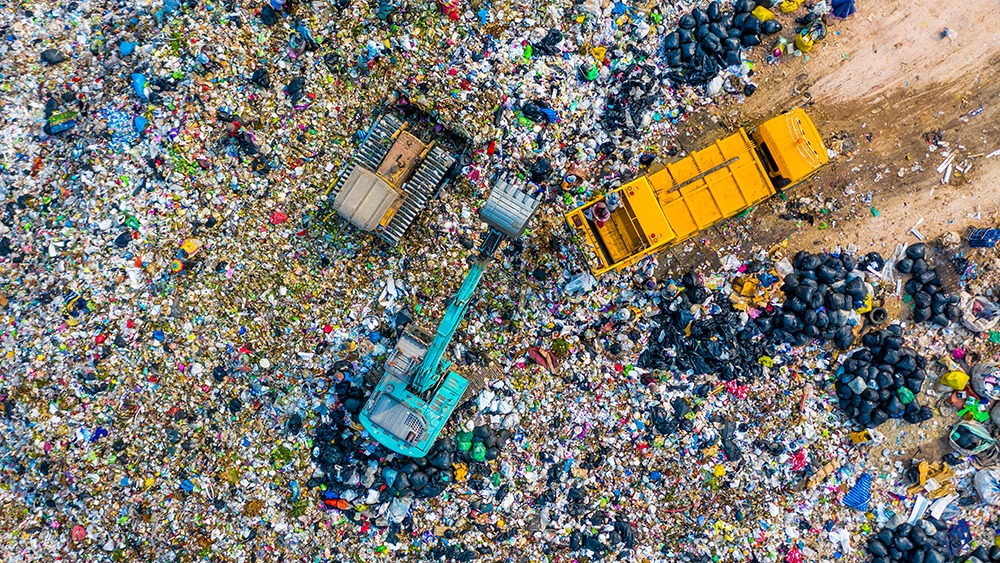Among emerging contaminants, per- and polyfluoroalkyl substances (PFAS) are getting a lot of attention recently. Referred to by some as “forever chemicals,” PFAS are a group of synthetic fluorinated compounds that are resistant to natural biodegradation and have been used for decades in a wide range of industrial applications and consumer products. In recent years, PFAS were identified as an environmental contaminant of concern associated with aqueous film-forming foams (AFFF), used with a primary focus on their use at military installations for fighting petroleum fires. However, recent evidence has emerged showing that PFAS are far more prevalent in the environment than previously understood. We now know that PFAS are associated with diverse sources and have chemical properties that let them migrate long distances in surface water, groundwater, and the atmosphere.
There is also now an increased awareness of the potential adverse human health and environmental impacts of PFAS, leading to the setting of stricter health-based standards. Improved analytical methods illuminating the prevalence of PFAS in food and drinking water supplies, along with more rigid health-based standards, highlight that PFAS are a prevalent emerging environmental contaminant.
Why are PFAS getting so much attention now?
The U.S. EPA recently published draft interim recommendations for addressing PFAS-contaminated groundwater. But, if PFAS have been around for decades, why all the concern now? It’s the convergence of four factors.
- PFAS were detected in approximately 4% of the public drinking water systems with more than 10,000 users as part of the Unregulated Contaminant Monitoring Rule Round 3 (UCMR3) testing conducted from 2013 to 2015.
- In 2016, EPA lowered the provisional drinking water health advisory level (HAL) nearly tenfold for PFAS compounds based on recent human health effects studies. The HAL decreased from 400 parts per trillion (ppt) down to 70 ppt. The new toxicity assessment and lower HAL resulted in far more public drinking water systems exceeding the HAL.
- Between 2017 and 2018, lawsuits against the manufacturers of PFAS were settled. These settlements, combined with publicizing the results of PFAS investigations and drinking water supply treatment programs, increased public awareness of PFAS environmental contamination.
- Responding to the growing body of evidence that PFAS contamination may originate from many sources ” and may be associated with adverse health effects at low exposure levels ” state regulatory agencies are developing their own standards and screening levels, most of which are lower than the EPA HAL. These new standards are driving the investigation of PFAS in environmental media.
What types of sites could have PFAS contamination?
The locations with the most significant PFAS impact generally include areas downstream or downgradient from PFAS manufacturing facilities, or near areas where AFFF have been used. Landfills and wastewater treatment facilities associated with those sites are also prime locations for PFAS detections.
Leachate from municipal solid waste (MSW) landfills and accumulated sludge and biosolids from municipal wastewater treatment plants (WWTP) have exhibited detectable levels of PFAS compounds during several governmental studies. As a result, the possible presence of PFAS compounds in agricultural products from areas where PFAS-impacted biosolids may have been land-applied is a concern and is being investigated by state and federal agencies, including the Food and Drug Administration.

Since PFAS compounds are also in consumer products such as stain- and water-resistant fabric treatments and personal care products, they are present in domestic sanitary sewer and municipal landfill waste streams. Understanding the composition of PFAS present at a location can be invaluable in forensic evaluations of the source(s) of the PFAS.
Finally, PFAS compounds were also added to a number of substances used in industrial processes, including mist suppressants used in certain metal plating operations. Consequently, facilities that used substances with PFAS additives could have PFAS contamination in soil and groundwater.
What business sectors are targeted for regulatory action?
Recent regulatory attention has focused on municipal airports, landfills, and WWTPs. For example, California has issued mandatory orders for the investigation of PFAS at municipal airports, landfills, WWTPs, and drinking water suppliers. At WWTPs, PFAS are a concern in effluent because they’re typically discharged to surface water. Although PFAS standards for surface water are not prevalent in the U.S., they are emerging. Massachusetts just released proposed PFAS screening levels for surface water for six PFAS compounds.
Who does this impact? Any businesses that have contributed wastes containing PFAS to landfills or have facilities that have discharged PFAS-containing constituents to WWTPs. However, facilities that discharge to WWTPs face the greatest short-term concerns. If WWTPs are required to reduce PFAS in their effluents or biosolids, or can no longer dispose of biosolids through landfarming, they must control their influent using their industrial discharge permits. That could mean a dramatic change in waste stream management and processes for the industrial sector and likely higher discharge monitoring and permit fees.
What should entities facing PFAS regulations do?
The California State Water Resources Control Boards and Regional Water Quality Control Board recently issued Investigative Orders to 31 California airports related to storage and use of AFFF. The overarching message from these orders and initiatives is to identify and eliminate significant PFAS sources to protect current and future drinking water supplies.
If these sources are determined to be related to historic releases or waste management practices, liabilities associated with these sites should be evaluated and managed accordingly. Furthermore, if the future use of materials that contain PFAS is necessary for the success of an enterprise, strict management protocols should be implemented to mitigate potential future liability claims.
How are PFAS regulations being rolled out?
California is not alone. A growing number of states are pursuing PFAS policies, including Alaska, Michigan, New Jersey, New Hampshire, New York, and Vermont. The states are driving regulations, so rules vary. Within the states that are currently active with PFAS regulation, several scenarios trigger direct regulation of a facility or site:
- Existence of maximum contaminant levels (MCLs) or MCL-equivalent values, which triggers public water supply well sampling
- State listing PFAS as a hazardous substance, or listing PFAS compounds in state remediation standards, which triggers an investigation under state remediation regulations
- State-mandated investigation of specific suspected sources and/or state-wide water supply well testing, which triggers an investigation of certain PFAS sources
Any of these conditions can result in a finding of PFAS contamination and potentially linking that contamination back to sources. It’s crucial to determine if your organization has a potential PFAS source. If so, is that source associated with a specific facility type that is being targeted by state regulatory agencies? Is it located in proximity to sensitive areas being investigated by those agencies? Is it associated with a facility that is already regulated by a state remedial program?
What is the proper due diligence for handling PFAS?
PFAS create an interesting due diligence dilemma because they are not a CERCLA hazardous substance yet and are therefore not subject to the American Society for Testing and Materials (ASTM) standard for a Recognized Environmental Condition. Regardless, buyers and sellers of real estate and businesses should understand the potential for PFAS use and associated release potential as part of the due diligence process. Whether PFAS are designated as hazardous substances or not, appropriate risk management is required for environmental liabilities associated with PFAS.

Why do drinking water levels for PFAS compounds vary so much by state?
PFAS regulations can get confusing. States are following the basic model set by EPA for deriving drinking water standards but are using their own technical inputs rather than using inputs established by EPA. There are three things that set a drinking water regulatory value:
- Toxicity value
- Relative source contribution factor
- Drinking water intake rate
States have derived one or more of their own values for these parameters, with several of them being more conservative than the values used by EPA to establish the health advisory. This translates to a more than twice the magnitude span in drinking water regulatory values among the states that have developed or proposed such values. While the regulated community cannot change the values issued by these states, understanding how they are derived, and that there is an abundance of conservatism built into the values, can be very helpful with risk communication.
What do the new EPA recommendations mean for your organization?
The April 2019 EPA recommendations were meant to clarify how risk assessment of PFAS and the drinking water HAL should be addressed under remedial investigation programs. Clarification is necessary due to differences in the methods that EPA used to derive the HAL and the methods that EPA uses to evaluate potential health risks associated with drinking water under their other regulatory programs, such as CERCLA and RCRA.
Notably, EPA used an atypical critical receptor and associated daily water ingestion rate to derive the HAL, whereas EPA uses reasonable maximum exposure (RME) receptors and exposure factors in risk assessments. The new guidance affirms that the risk assessment process should be used to evaluate PFAS in groundwater when the groundwater is not currently being used as drinking water.
Bottom line: if PFAS is detected in groundwater above the EPA HAL, but the groundwater is not considered a drinking water source, no response may be needed.
Why is cross-contamination so easy when investigating PFAS?
PFAS compounds are present in many consumer products, from clothing to food containers to sunscreens. Even the equipment typically used to obtain environmental samples, such as Teflon® bailers, may contain PFAS. Any of these materials could be a source of PFAS and result in false identification of PFAS in environmental samples and should be avoided.
Confounding this issue, the chemical testing methods used to detect PFAS are very sensitive and can yield ambiguous results. PFAS can be detected in environmental samples at a concentration below 1 ppt, which is several orders of magnitude below levels typically achieved for other contaminants of concern. Since the sources of PFAS are present in our everyday world and the sensitivity of the analysis is so high, it’s crucial to be careful not to contaminate the samples. The use of field blanks is critically important when evaluating the potential for cross-contamination during sampling and for excluding these potential confounding sources during the data verification and validation process.
What are PFAS treatment options?
Right now, granular activated carbon (GAC) and ion exchange resin (IXR) are the only technologies with proven success as full-scale treatment systems for water. Haley & Aldrich’s subsidiary, ECT2, which Montrose Environmental Group acquired in September 2019, developed the IXR technology. IXR is proven to have higher treatment capacity, slower breakthrough and can effectively treat a broader range of PFAS mixtures at higher concentrations than GAC.
Other ex-situ water treatment technologies are under development, such as reverse osmosis, nanofiltration, and electrochemical oxidation. Soil is the more significant treatment challenge. Some ex-situ treatment technologies, such as thermal desorption, smoldering combustion, and soil washing, are being developed. However, only excavation and disposal in a licensed facility, incineration, or capping, are presently viable options for soil. Because of these limitations, capital projects that require excavation of PFAS-contaminated soil should carry these soil management costs as part of the project budget.

How do you stay on the right side of PFAS regulations?
The PFAS regulatory landscape is uncharted territory “which is why it’s important to make careful, deliberate steps to stay ahead of state and federal rules and avoid a public relations nightmare. More than 20 years ago , Haley & Aldrich recognized the significant need for innovative technologies to treat emerging contaminants for our clients. As a result, we established ECT2, which uses synthetic resin to treat emerging contaminants in groundwater and is the most effective, proven water treatment technology available today. Establishing ECT2 is just one example of how we identify and apply innovative technologies to address our clients’ most pressing and complex challenges, including emerging contaminants.
Contact Jay Peters to find out what the right PFAS and emerging contaminant strategy is for your organization.
Published: 8/7/2019
- Aerospace
- Advanced reactors and licensing support
- Manufactured gas plants
- Industrial and manufacturing
- Airports
- Automotive
- Consumer products
- Food and beverage
- Manufacturing
- Metal foundries, finishing, and recycling consulting
- Construction
- Remediation construction
- Contaminated site management
- PFAS
Authors

Principal Consultant, Risk Assessment

Senior Associate, Technical Expert




